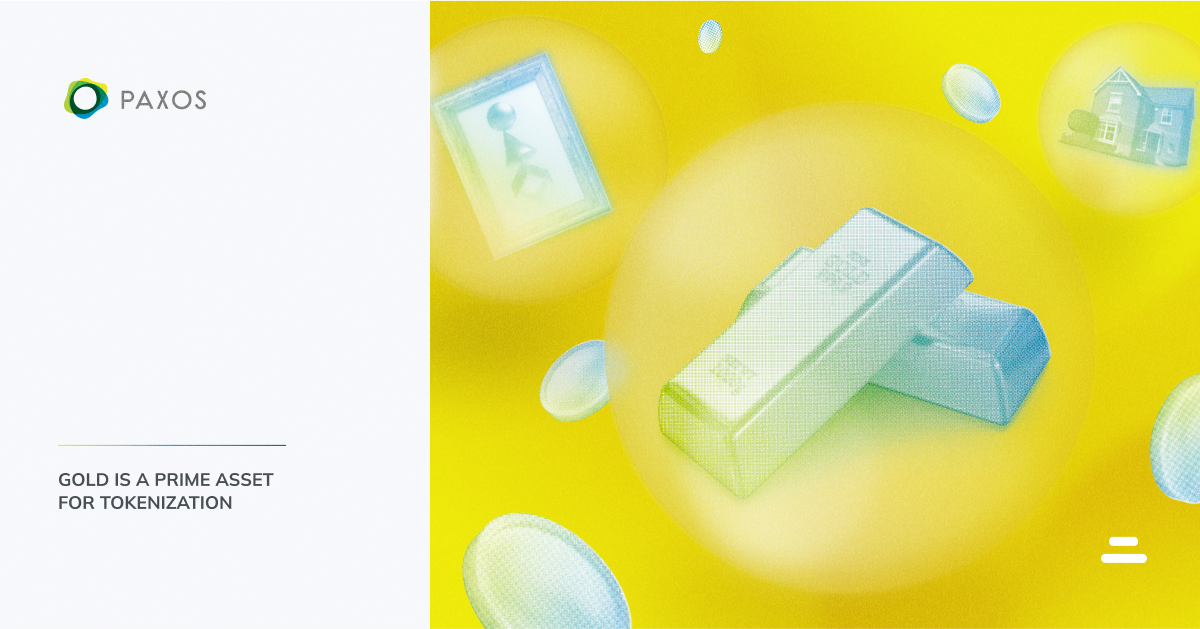
As DeFi and cryptocurrency markets continue to inch their way toward the mainstream financial system, the tokenization of real-world assets and other financial instruments has emerged as one of the hottest trends. Assets currently being tokenized include exotic cars, works of art, corporate securities, intellectual property, real estate and commodities. In today’s uncertain economic climate of inflation and recession, coupled with geopolitical ripples from the war in Ukraine, investors are naturally lowering risk across their portfolios.
Tokenizing gold is the process of creating a blockchain token that represents a specific amount of gold, with the token’s value and ownership directly corresponding 1:1 with the value of the physical gold it represents.
Gold’s reputation as a safe-harbor investment
Gold prices peaked in early 2022 before falling to a one-year low, and now the asset is back on the upswing as tensions with China and inflation concerns mount. Historically, interest in gold has been high during challenging economic times due to several factors including its relatively predictable supply and its positive price elasticity, meaning when the demand is high, its value generally increases.
To many, gold represents a stable asset class, something they turn to in turbulent times. Add to this the fact that gold prices are currently lower, and the commodity is ripe for expanding tokenization. Even with gold’s cyclical fluctuations, it’s generally known to return to value after downturns, and remains an enduring haven as a store of value for individual and institutional investors.
There are more reasons to prompt a current consideration of tokenizing gold. Tokenized gold is an inclusive asset, expanding access to a well-known physical asset, while also facilitating increased liquidity, faster settlement, and lower costs. Investors looking to stabilize portfolios would have more options to turn to with digital assets fully backed by the stability of physical gold.
Opening gold markets to new customers
Investment products like derivatives, ETFs and futures contracts give investors exposure to the price of gold, but not ownership of the underlying asset. Owning tokenized gold means owning actual gold, blending the benefits of full ownership of allocated gold with the operational efficiency of unallocated gold. Gold-backed cryptocurrency lowers the barriers to entry for interested investors who perceive physical gold coins and allocated bars to be out of reach because of minimum purchase costs, storage challenges and tax implications.
Paxos’ recent Gold Attitudes Survey indicated that if such barriers were removed, a full two-thirds of investors say they would be very likely to buy gold. Additionally, a potential market opportunity exists with younger digital native investors who are enthusiastic about digital gold, with 43% of those 18-34 having purchased digital gold in the past five years. Tokenized gold makes it easier to buy smaller increments, which again opens it up to a wider range of investors who cannot afford to buy a large quantity of physical gold with prices hovering at $1700 to $1800 per troy ounce.
Removing friction for greater liquidity
Traditionally, gold purchases involved an understanding of important factors: purity, manufacturers’ reputation, storage costs and insurance. Interested investors with digital wallets will marvel at the ease of purchasing investment grade gold backed digital assets that come with no storage costs and details about its quality and origin. They welcome the bypassing of traditional brokers, access to lower fees and the speed of transactions. Everyday investors who need to move swiftly to react to volatile market forces previously found their only option for getting physical gold coming from small retail outposts. For the institutional physical gold buyer, it can take days from time of purchase to settlement.
Mitigating purchasing friction combined with the newfound ability to transact investment grade gold in fractional increments results in gold’s increased liquidity as a commodity. Tokenized gold provides a transparent, open delivery method, an easy way to buy and sell, and a convergence of the cash price and prices that reflect future delivery over time. The increased liquidity of gold means that investors will feel safer adding more to their portfolios.
Build trust by demystifying gold through tokenization
Though gold is universally recognized as a reliable investment asset, for uninitiated investors, some mystery exists with regards to the purchasing, storing and movement of investment grade physical gold, most certainly due to a lack of general public knowledge. Tokenized gold can address public concern, as the digital asset is easily redeemable for gold bullion, fiat or digital dollars, as well as instantly convertible and tradeable. In other words, if you own Pax Gold, you own the physical gold it represents, and you can move it around with a mouse instead of a truck and in seconds instead of days.
For tokenized gold to fulfill its potential as an asset, cryptocurrency and blockchain product launches need to follow an upgrade in public awareness efforts, which are limited. Perceptions can be slow to change at first, but if perceived barriers to purchasing tokenized gold were removed, 58% of investors say they would be significantly more likely to purchase more.
Institutional investors are getting in the game
Like retail investors, institutional investors are also feeling pressure due to pervasive inflation. Rising interest rates as well as high levels of market volatility are testing the cryptocurrency space, even as leading firms like Goldman Sachs explore tokenized real world assets.
One obvious area for improvement is in margin trading, a traditional banking practice of using funds provided by a third party to conduct asset transactions, and yet margin trading is changing too. Many buy-side financial institutions will, for the first time, need to comply with the post-financial crisis regulation referred to as Uncleared Margin Rules (UMR) beginning in September 2022. UMR provides a terrific use case for financial institutions to turn to tokenized gold, by using it as a form of collateral for initial margin postings during times of price volatility.
There are tangible signs that institutional investors are recognizing the appeal and utility of digital assets and their ability to reduce risks and inefficiencies across long, complex chains of intermediaries, and seeking to upgrade to automated and streamlined processes and enhanced reporting. Though impediments remain when attempting to grow the gold market on a global scale – which is critical to maintaining its relevance in an increasingly 24/7, tokenized asset world. I’ve recently written about this dynamic and how it provides a unique opportunity for the Singapore gold market. We need a marketplace where supply, storage and settlement are automated and standardized in a way that makes it trustworthy, efficient and available to any global investor, small or large.
Big steps towards the financial mainstream
Tokenization of real-world assets such as gold will prove essential for the continuing maturation of DeFi and cryptocurrency, placing them on par with traditional markets and asset classes. In fact, more fully backed tokenization of commodities and assets like gold, bonds, art, and real estate will also demonstrate a movement toward stability for nascent blockchain technology, attracting risk averse investors who may have been reluctant to participate previously.
Tokenization’s greater liquidity and open access, working in tandem with blockchain’s inherent transparency, can become the foundation for new financial products to enter DeFi. It allows the market to build its integrity, increase accessibility and create a fungible global market. And with difficult market forces persisting, the time is now to increase the availability of tokenized gold.
